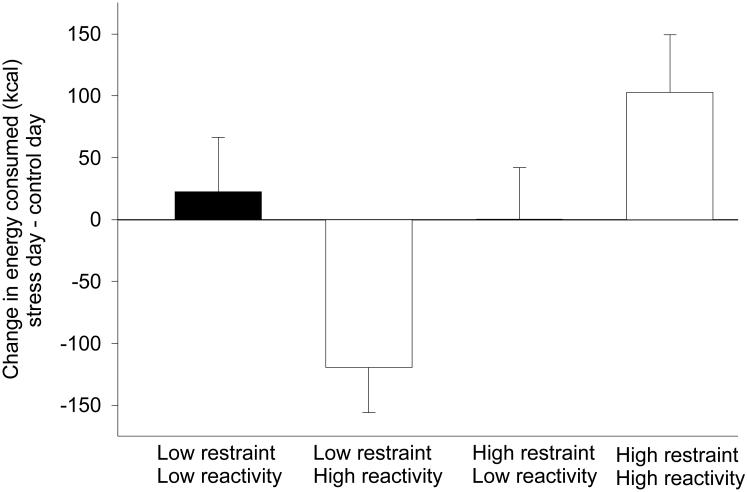Figure 3.
Change (mean ± SE) in energy of snack foods consumed (stress day minus control day) of high and low dietary restraint and stress reactivity groups. A total of 40 children age 8 to 11 years were studied on a interpersonal speech stress day and reading control day. Subjects groups were assigned to low-restraint/low-reactive, low-restraint/high-reactive, high-restraint/low-reactive, and high-restraint/high-reactive groups based on median splits of dietary restraint and stress reactivity. The low-restrained/high-reactive group consumed fewer calories of snacks and high-restrained/high-reactive children consumed more calories of snacks in the stress compared with the control condition. Created from data presented in (37).

